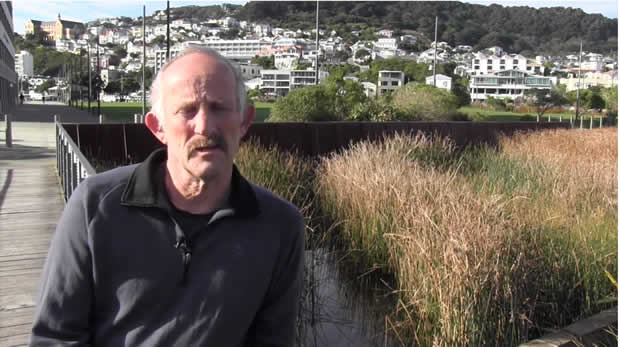If we really were to maintain or improve the quality of every waterway, what would happen to dairy conversions?
At a first glance, they would have to stop. To maintain or improve the quality of our water, we have to stop putting more gunk in it. Logically that means stopping dairy conversions, or any other development that harms the water.
Gareth Rivers Answer. So does that mean no more conversions to dairy? from Gareth Morgan on Vimeo.
Is Dairy worse for our water than Sheep & Beef?
The nutrient loading into waterways from sheep and beef farming is far lower per metre of waterway than it is from intensive dairying. But the profitability of intensive dairying is higher so the projections in several regions are for more conversions of sheep and beef farms to dairying. This is probably the logic that drove the Government to fudge the intent to maintain and improve water quality by adding the phrase “across a region”.
Dairy farmers like to point out that they often improve water quality, through fencing and planting waterways. Often sheep and beef farmers – due to the limited profitability of their operations – are yet to invest in these things. Fencing and planting waterways can improve water quality by providing shade (reducing water temperature), keeping stock out (reducing poo and pathogens entering the water) and preventing erosion (which keeps soil and nutrients out of the water).
However, evidence suggests that this good work hasn’t been enough to offset the damage done by the dairy boom. The sheer weight of nutrients (especially nitrogen from cow pee) that is seeping through the soil and into waterways is still driving water quality downward. That is even when you account for the soil, nutrients and poo that is being kept out of waterways through fencing and planting. The ultimate indication for this is that more rivers are declining than improving on the crucial measure of ecosystem health: the Macroinvertebrate Community Index.
Does this mean no more Conversions?
A commitment to maintaining or improving a waterway doesn’t necessarily mean no new development at all. It is perfectly possible to make other improvements to water quality that offset any damage caused from more conversions. For instance, a prospective dairying convertor could finance some waterway riparian planting and fencing for a sheep and beef farmer elsewhere in the catchment. This could be sufficient to offest the added pollution likely to come from the dairy conversion.
In other words, it isn’t enough simply for dairy to farm at best practice. To maintain or improve our waterways, we have to offset any damage. This is simply making sure that farming pays the full cost of operations – including the cost borne by the environment.
Of course this will be harder to do in practice than in theory. This is where economic instruments could help water quality. Once regions have clear nutrient limits, leaching rights should be tradable. That means a dairy farmer could buy the rights to leach held by non-dairy farmers. The non-dairy farmers would have to stop leaching, while the dairy farm could leach more. This would be one way for dairy farmers to pay sheep and beef farmers to fence and plant rivers and slopes, so that dairy farming can continue expanding.
The other alternative is that a developer could persuade the local community to accept lower water quality in exchange for the economic and social benefits of increased commerce. However, in the first instance we should encourage developers to mitigate their impact.

